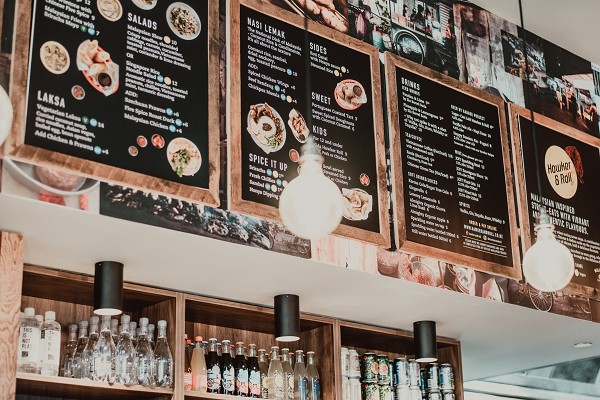How to Design the Perfect Menu
New legislation to include calories
The Government’s plans to tackle obesity are set to see restaurants, takeaways, pubs and cafes with more than 250 employees add calories to every item on their menus.
The requirement for labelling of calories for larger out-of-home businesses has been in place for almost a decade, yet this change will now impact smaller hospitality businesses. While there is no set date for this change to come into effect, it has made many businesses rethink their menus in preparation for future changes.
Why including calories is beneficial
Many customers prefer to have in-depth nutritional information about the foods that they consume. In fact, three quarters of people prefer cafes, restaurants and takeaway businesses to display calorie information on their menus. Including this information suits the demands of customers, making nutritional details accessible for those that want to view them.
How to work out the number of calories
There are many sites that enable you to discover the calorie and nutrient content of single ingredients, allowing hospitality businesses to work out the calories in each item on the menu. The USDA National Nutrient Database is an example of a useful resource to calculate calories.
When to change your menus
If you are not directly impacted when the new legislation comes into place, it is beneficial to prepare and update your menu when it suits you best.
Ideally, you would update your menus when you are certain that the information on them will remain correct for a significant period of time. Popular times to change menus include when changes need making, or when menus begin to look outdated or worn.
Make sure you organise the following before going to print with your new menus:
Food and drink choices
Test any food or drink additions to your offering and make sure they are popular before committing to printing them on a menu. These could be tried and tested customer favourites, or specials that have proven to be best-sellers.
Prices
Prices change over time, so your menu should reflect any updated prices. Before going to print, make sure the prices are suitable.
Nutritional information
As we have explained, more customers are expecting nutritional information to be included on menus. Include accurate nutritional information as well as highlighting any details about allergens.
Proofreading of the menu
Last, but certainly not least, your menus should be thoroughly proofread before going to print. Having to re-print can prove very costly, so make sure there are no mistakes and that you are 100% happy before they are created.
How to design the perfect menu on a budget
If you do need to make an adjustment to your existing menus but don’t want to break the bank, here are some of the ways that you can design the perfect menu on a budget.
Use printable menus
Consider printing paper menus that include any amendments, allowing you to make changes to your regular menu, drinks list or specials menu without having to invest into heavy duty or laminated alternatives. To have a positive impact on the planet, make sure these can be recycled.
Consider digital menu boards
A digital menu board requires initial investment, however they can then be updated as frequently as you want, saving money in the long term.
Utilise peg letter boards and chalkboards
These eye-catching methods of showcasing items on a menu can be updated as often as you want, while also adding a touch of creativity. Some use them to highlight specials, while others include their whole menu on these great display boards.
Update online menus
Showcase your new additions and menus on your digital platforms, whether this is on social media, on PDFs, or on your website. This is the best way to capture customers’ attention online and spread the word of your updated menus.
Menu design FAQs
How often should you update your menu?
Consider changing your menu every four months, in order to offer seasonal specials. This can be done by rotating between different menus, or updating your existing ones.
How many items should be on a restaurant menu?
This depends on your ability and capacity. Your menus should be a reflection of your best-selling food and drinks, making sure the kitchen can deliver the items on every menu in a timely manner and to a great standard.
Where do people look on a menu first?
There is a sweet spot in menu design, often referred to as ‘the golden triangle’. These are the places where customers look first on menus, beginning in the middle, before looking at the top right corner of the menu, and then the top left. Many restaurants choose to place their items with the highest profit margins in these positions, as they capture readers’ attention best.
How do you design the perfect menu?
It’s a combination of using tried and tested techniques, as well as trial and error. To design the perfect menu, look at competitors’ for inspiration and create your own unique twist. Take feedback on board, take note of the items that sell best and make changes as required, paying attention to the differences that it makes to popularity.
Holly brings a wealth of experience in both print and digital publishing and is very passionate about the hospitality industry.
modernhospitality.co.uk




